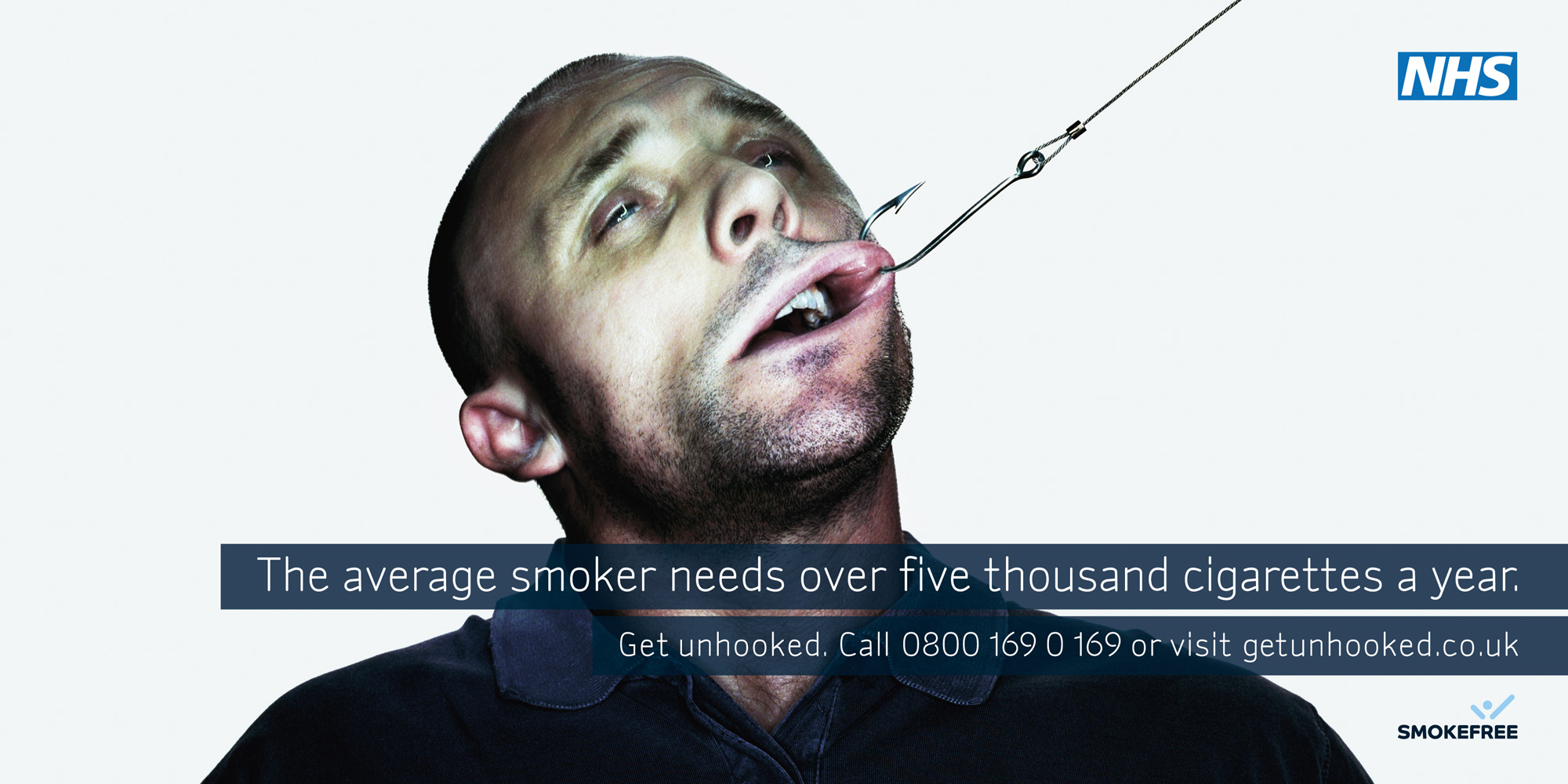This
campaign from the NHS received a record number of complaints after disturbing
photos were used, showing people with a fishhook through the sides of their
mouths. The metaphor of being ‘hooked’ on smoking was utilised in a way which
left many people revolted by the adverts, and caused 774 people to complain the
campaign was "offensive, frightening and distressing", placing it in
the top 10 most-complained-about adverts of all time. Designed to prompt people
to get “unhooked” by shock tactics, this approach certainly backfired here.
Shock
tactics have been used in advertising for years, with the aim of deliberately violating
social norms to get attention. Shock tactics usually work because they grab
people’s attention, and stay in the memory of those who have seen it; it is
very difficult to forget seeing something which shocks us, and thus advertisers
who use this technique can expect their advert to be remembered long after
someone has stopped seeing it, thus reinforcing the likelihood that their message
will be taken on board. According to information processing models, shocking
advertising should facilitate attention and thus comprehension, enhance
processing and then influence behaviour. However, there is a thin line between
what works, and what really doesn’t.
A
study by Dahl, Frankenberger & Manchada, (2003) used HIV/AIDs campaigns
promoting condom usage to see whether an informative, fear-invoking, or
shocking advert had the most effect on students. The shock advertisement
featured the tagline “Don’t Be A F***ing Idiot” and featured a nude couple
embracing intimately. In comparison the other two conditions used a driver’s
licence metaphor of life expiry dates (fear) and some statistics about the AIDs
virus (informative). They found that all three adverts were rated as equally
likeable, but the shocking one was rated as most obscene and startling. 84%
said that the shocking advertisement drew their attention most, demonstrating the
advertising power that shock tactics can have.
Perhaps
this NHS advert failed because, as well as being shocking and attention
grabbing, the memory that remains is one which causes the universal emotion of
disgust in most who view it. This emotion is posited as an ancient
disease-avoidance mechanism, designed to close ourselves off from the offending
stimuli, in an evolutionary mechanism designed to stop us from coming into
contact with toxic things (Oaten, Stevenson & Case, 2009). Therefore, the
processing route this advert takes may be one which in fact decreases attention
and comprehensive processing, whilst making a strong negative association with
the memory of the ad, making those who view it strongly averse to the advert,
rendering the message unsuccessful.
Dahl, D. W., Frankenberger, K. D., &
Manchanda, R. V. (2003). Does it pay to
shock? Reactions to shocking and nonshocking advertising content among
university students. Journal of Advertising Research, 43(03), 268-280.
Oaten, M., Stevenson, R. J., & Case, T. I. (2009). Disgust as a disease-avoidance mechanism. Psychological bulletin, 135(2), 303.


No comments:
Post a Comment
Note: Only a member of this blog may post a comment.